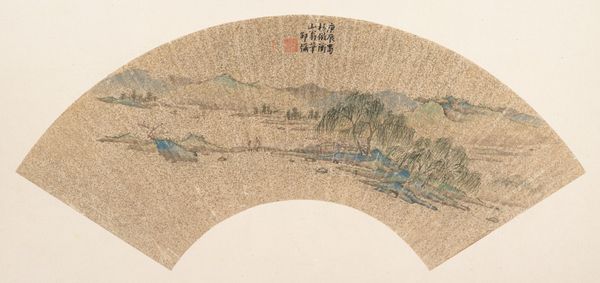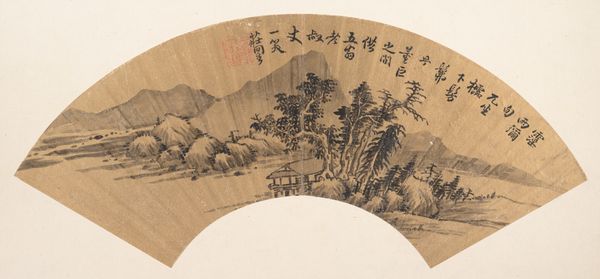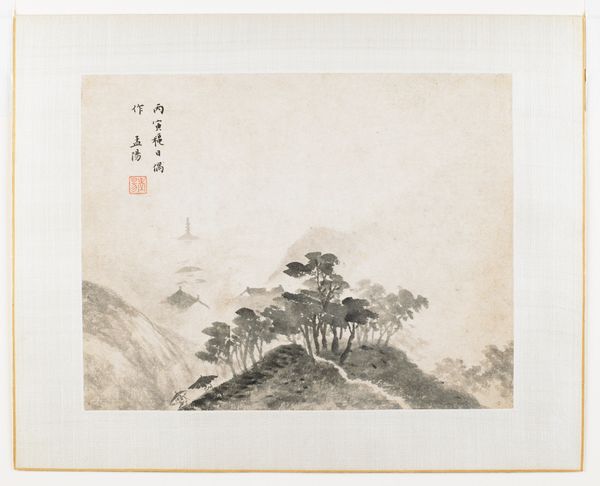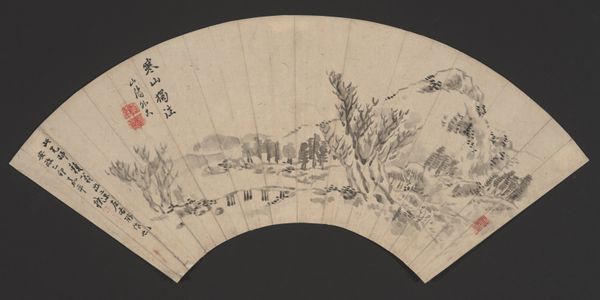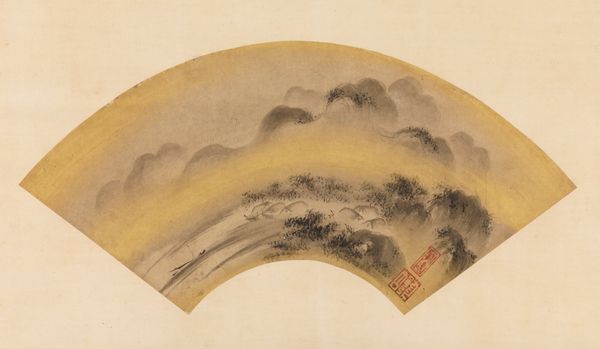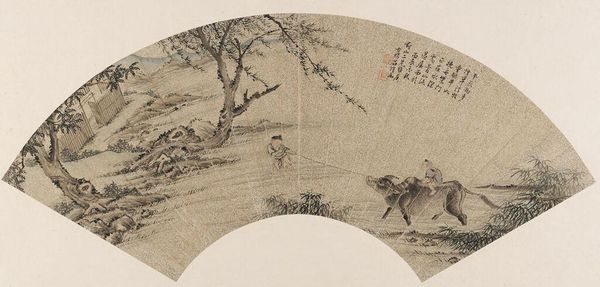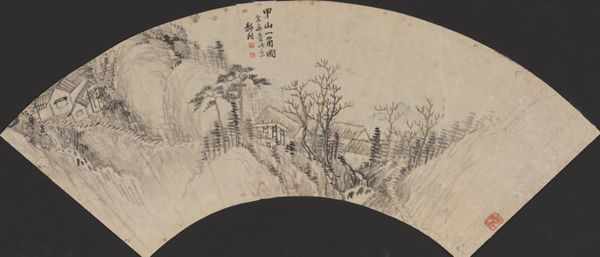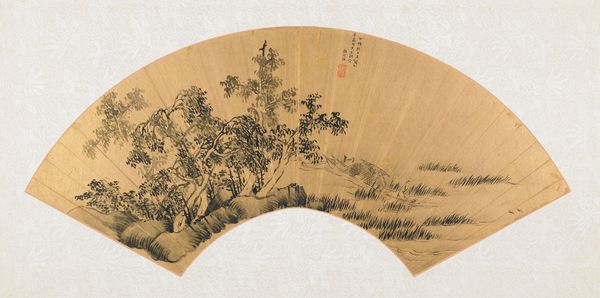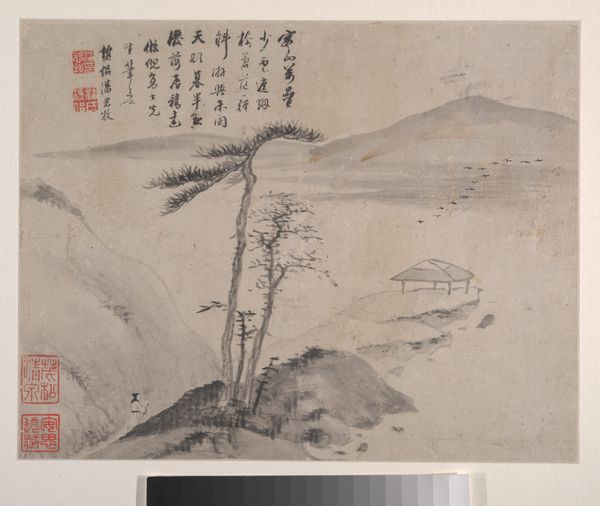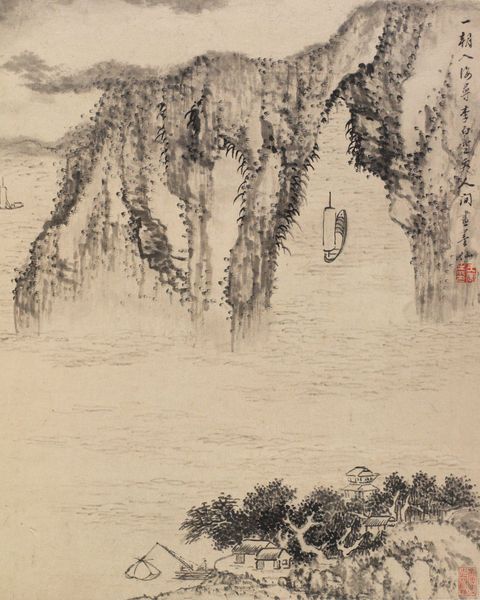
Dimensions: 7 1/8 x 20 1/4 in. (18.1 x 51.4 cm)
Copyright: Public Domain
Curator: Let's talk about Wu Shixian's "Misty Rain on the River in Spring," dating from around 1816 to 1916, currently residing here at the Metropolitan Museum of Art. Immediately striking, isn’t it? Editor: Oh, utterly! It has the quiet stillness of dawn about it; soft greys blurring into each other. It feels... elusive. Like a memory fading at the edges. The muted palette evokes a palpable sense of dampness and introspection. Curator: Indeed. Its creation hinges on the subtleties achieved with ink and watercolor on paper. Looking closely, we can trace the execution; consider the fan shape—a common object elevated through painting, and what does this tell us about art's accessibility and consumption? Editor: Hmmm, thinking about the materiality... it IS fragile, isn't it? Paper, watercolor... So much evocative skill on a readily damaged form. It also feels deliberately informal—a world away from oil on canvas shouting its importance. It whispers. I’m drawn to the almost bare trees… do they signify anything to you? Curator: Their starkness juxtaposed against the softer, misty elements certainly adds a layer of meaning. One cannot dismiss the use of ink that grounds it within the rich artistic tradition of China and the value placed on skilled brushwork in capturing the essence of nature. Consider that making such imagery was frequently commissioned to further entrench societal expectations and values. Editor: Right, but beyond that, isn't it the simplicity, the breath-like brushstrokes capturing light on the water... Almost impressionistic, yet with an intrinsic connection to both location and time? It just seems like a moment suspended, yearning to be rediscovered... Curator: Well, to delve more into materiality, note the delicate paper; not the heavy canvas, to further reveal the process is foregrounded here. This piece then opens discussions about art labor and consumer engagement—questions so pertinent when considering production of aesthetics! Editor: Well put. The skill involved seems to dance on the edge of the ethereal, really. But okay, I can acknowledge there is something wonderfully pragmatic and deliberate about this accessible, almost transient artwork... And also quite moving when understood more materially and placed within its proper context, thanks! Curator: Of course! Material consideration provides much context; glad to have expanded how you consider its purpose as a thing as well.
Comments
No comments
Be the first to comment and join the conversation on the ultimate creative platform.
